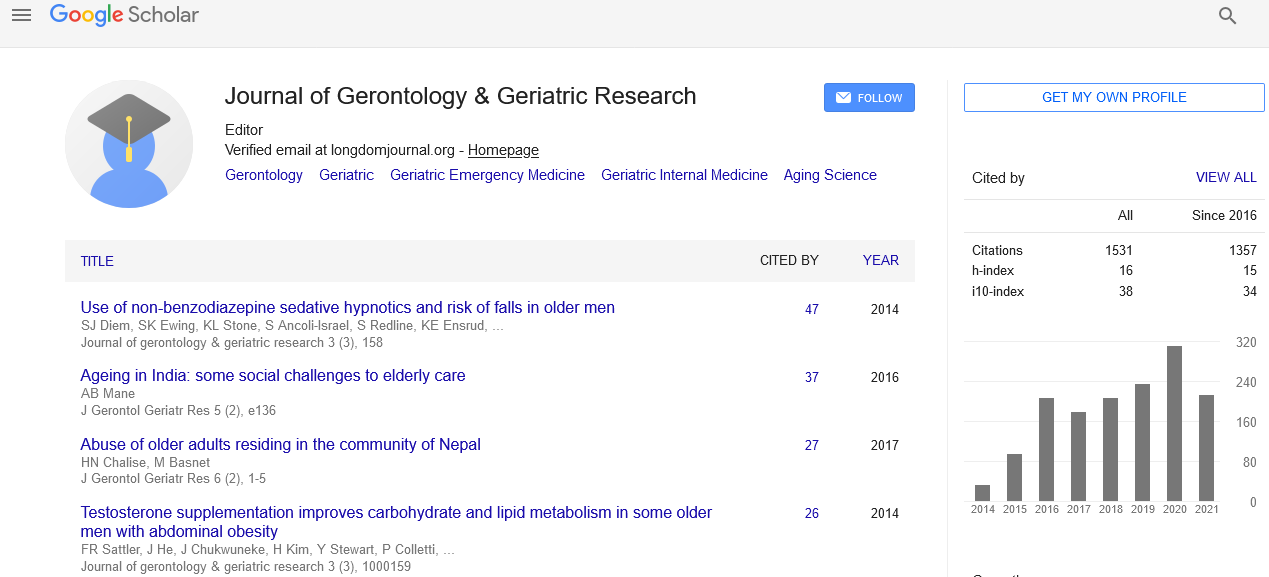PMC/PubMed Indexed Articles
Indexed In
- Open J Gate
- Genamics JournalSeek
- SafetyLit
- RefSeek
- Hamdard University
- EBSCO A-Z
- OCLC- WorldCat
- Publons
- Geneva Foundation for Medical Education and Research
- Euro Pub
- Google Scholar
Useful Links
Share This Page
Journal Flyer

Open Access Journals
- Agri and Aquaculture
- Biochemistry
- Bioinformatics & Systems Biology
- Business & Management
- Chemistry
- Clinical Sciences
- Engineering
- Food & Nutrition
- General Science
- Genetics & Molecular Biology
- Immunology & Microbiology
- Medical Sciences
- Neuroscience & Psychology
- Nursing & Health Care
- Pharmaceutical Sciences
Abstract
Factors Associated with Poor Muscle Mass and Strength in A Community-Dwelling Elderly Population: A Cross-Sectional Study
Serra-Prat M, Papiol M, Vico J, Palomera E, Bartolomé M and Burdoy E
Background: The pathophysiology of muscle wasting in the elderly is multifactorial and not fully understood.
Objective: To assess the main factors associated with poor muscle mass and strength in an elderly population and to assess differences by sex.
Methodology: An observational cross-sectional study of community-dwelling adults aged 75 years and older. Muscle mass was assessed by bio impedance analysis and muscle strength by handheld dynamometer. Main study factors included physical exercise, nutritional status, co-morbidities, anabolic and catabolic hormones (ghrelin, insulinlike growth factor1, testosterone, insulin and cortisol), and inflammatory markers (interleukin-6, C-reactive protein). Other study variables included sociodemographic characteristics, chronic medication, functional capacity, a complete blood count and basic biochemical analyses.
Results: A total of 324 persons were recruited: 170 men and 154 women, mean age 80.1 years. Muscle mass was independently associated with age, physical activity, obesity, gastro-duodenal ulcer and interleukin-6 levels in men and with physical activity, obesity, insulin-like growth factor 1 levels and fiber intake in women. In men, muscle strength was independently associated with previous falls, number of medications, dyspepsia and good nutrition and, in women, with age, physical activity, arthritis, diabetes, number of medications and cortisol levels.
Conclusions: Physical activity and obesity are the main factors associated with muscle mass in community-dwelling elderly men and women. Sex differences identified in certain biomarkers associated with loss of muscle mass and strength would suggest a more important role for inflammation in men and for anabolic/catabolic imbalances in women.


